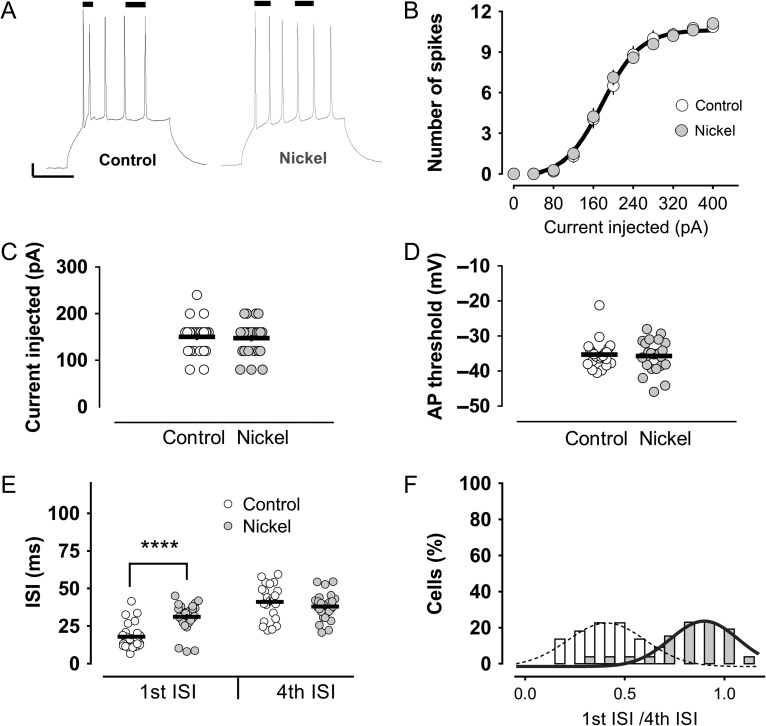Figure 1.
The stereotypical firing of mature granule cells, but not their general excitability, is modified by nickel, a T-type channel blocker. (A) A representative trace shows the characteristic firing pattern of mature granule cells in response to a square pulse current injection to the soma, specifically, an early burst of spikes, followed by tonic action potentials. Also shown is an illustrative trace of the discharge in the presence of 100 μM nickel in the bath. The bars on top of the traces indicate the first and fourth ISIs. Scale bars: 10 mV/100 ms. Nickel did not modify the general excitability of the mature granule cells. Neither the number of action potentials (B), nor the minimum current needed to elicit an action potential (i.e., rheobase) (C), nor the action potential threshold (D), were modified by nickel. (E) There was, however, a strong impairment of the burst firing by nickel, with no modification of the later tonic spikes. (F) The effect of nickel is clearly appreciated as a shift in the distribution of the “first ISI/fourth ISI” ratios to a value close to 1 (0.81). In the control group, the ratio was 0.43. Both ratios were significantly different (P < 0.0001, Mann–Whitney U-test.). ****P < 0.0001, Mann–Whitney U-test.

